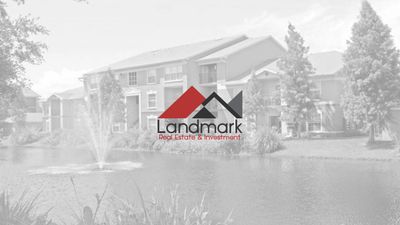
OneSite, a provider of property management software, has been in existence for over twenty years. It works with many vendors, apart from its proprietary systems. OneSite Facilities Plus is the most popular form of it, designed by RealPage. OneSite provides a simple and affordable lease management solution for those whose fear is based on price.
OneSite is a good choice if you are a property manager in the market for a new platform. While the company has many options, OneSite Facilities Plus is RealPage's flagship product. It was specifically created to serve the needs of property managers as well as maintenance professionals. With a host of features and benefits, OneSite has earned a spot as a top-of-the-line property management tool. From leasing and tenant screening to maintaining and improving the physical appearance of the property, a OneSite solution can help boost the bottom line.
There are a few drawbacks to this software. While it is a cinch to set up a OneSite account, maintaining and supporting it is more than just entering data. The company doesn't offer any support to users. That means users won't be able to expect to receive the same level of customer service as a sales rep. It is also possible to have issues with the interface. This is not surprising considering how old the software is.
Despite its shortcomings, OneSite has one major advantage over its competitors: it is one of the most flexible property management solutions on the market. OneSite, unlike other property management software providers can be configured to meet all the needs property owners and managers. This includes small, mid-sized, and large property management operations. In addition to a plethora of property management tools, the software is backed by a solid warranty.

OneSite also has some additional information. These include the most efficient way to manage your documents as well as a variety of features that let you track your tenants. You will find a variety of community tools available, including an online directory that allows you to create and manage your community activities. Besides providing a convenient location for storing a multitude of community-centric information, OneSite also allows users to connect with peers and colleagues in real time.
FAQ
What happens when a handyman causes injury and I am not satisfied with his work.
If anything goes awry during the project, you'll need to inform him immediately. It is best to note down what happened and attach photos. Contact your insurance company to file a claim.
Does a handyman make suggestions about how to improve my home?
Absolutely! True, a handyman can be trained in any area of home repair or maintenance. He or she knows what needs to be fixed and what doesn't. You don't have to be shy about asking for advice when you need it.
What is the cost of handyman services compared to general contractors?
Yes! A handyman can sometimes provide a much cheaper alternative to having a general contractor complete a task. This is especially true for those who have never had a contractor do a job. A handyman is able to speed up the process of completing a job because they are more skilled in certain tasks.
What can a handyman do to install new fixtures and appliances?
You can always hire a handyman to help with these kinds of projects. It is important to know the exact type of appliance or fixture that you are installing before you begin.
Statistics
- Another estimate was that the market in the United States was $126 billion and was increasing by about 4% annually. (en.wikipedia.org)
- An estimate was that in 2003, the market for home maintenance and repair spending was up 14% 2001 to 2003. (en.wikipedia.org)
- “Before the pandemic, 40% of people asked how we could estimate a job when we weren't there,” Rose recalled. (inquirer.com)
- According to the U.S. Bureau of Labor Statistics, in May 2020, there are 1,357,630 handymen employed in the U.S.. (angi.com)
- A franchise was approximately $110,000 with a franchise fee of $14,900, according to a spokesperson for a national handyman franchise. (en.wikipedia.org)
External Links
How To
How to Replace a Broken Tile
Step 1: Remove the old tiles.
Take out the tiles and place them on a new flooring surface. These tiles will be useful later on, so you'll need to keep them intact. To avoid any problems with replacements, take note of the pieces that have been damaged or lost.
Step 2: Choose New Tiles
Here are some options for tile repair.
-
You can find a tile replacement that is similar to the one you have just removed.
-
To match a tile, you can use the measurements you took after removing it. This will make it much easier to find the right size without measuring again.
-
You should look for different colors, patterns and textures.
-
Consider what grout you prefer to use. Some people prefer solid color; others enjoy mixing it up.
-
Be sure to select a tile that is resistant against moisture.
-
Consider the location of your tile. You can save both time and money by making sure that there is enough room for proper installation.
-
Once you've found the tile that suits your needs, you can place your order online.
Step 3: Install the tiles.
For your new tiles, use the same method that you used to install them. Make sure they are aligned correctly so that they fit together perfectly.
Step 4 – Clean up
Be sure to sweep up all debris from the floor before applying the final protective layer.
This will prevent dirt or dust from collecting between the tiles and causing mold.
Step 5 -- Sand the Floor
After you have cleaned everything, sand the floor to remove any particles that were left from the previous step.
Step 6 -- Finish Off
After the floor has been smoothed, you can apply protective coatings to the tiles. Because wet paint can cause damage to the tiles' surfaces, it is important that you wait.
To help prevent stains, you could always use a product called 'damp-anddry' on your floors.
But it won't address every issue that might arise after installing your new tiles. For example, if you have a lot of kids running around, you may want to consider using an anti-slip coating on top of the protective layer.
Finally, do not forget to keep the protective sealer on for several more weeks before you move back into your home.